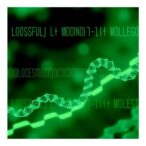
A groundbreaking advancement in molecular imaging promises to revolutionize the diagnosis and management of invasive mold infections, a formidable threat to immunocompromised patients worldwide. Presented at the Society of Nuclear Medicine and Molecular Imaging (SNMMI) 2025 Annual Meeting, researchers from Johns Hopkins University School of Medicine have unveiled an innovative PET radiotracer, ^18F-Fluorodeoxysorbitol (^18F-FDS), which exhibits unprecedented sensitivity and specificity in detecting a broad spectrum of pathogenic mold species. This novel technique offers a noninvasive means to identify and localize infections that currently evade early diagnosis, thereby enhancing patient prognosis.
Invasive mold infections, often occurring in individuals undergoing cancer treatments or immunosuppressive therapies, represent a dire clinical challenge owing to their aggressive nature and high mortality rates, sometimes reaching 85 percent. Traditional diagnostic modalities struggle with the timely and precise identification of these infections predominantly because the clinical presentation overlaps with other inflammatory conditions, and existing biomarkers lack comprehensive sensitivity. The emergence of ^18F-FDS PET imaging addresses this critical gap by targeting metabolic pathways unique to fungal pathogens.
The team, led by Dr. Carlos Ruiz-Gonzalez, employed rigorous in vitro assays to evaluate ^18F-FDS uptake across 30 diverse mold strains isolated from infected patients. These models confirmed the tracer’s rapid and specific assimilation by living fungi, including strains resistant to conventional antifungal drugs, while demonstrating no uptake in heat-killed molds or human cellular tissues. This specificity underscores the tracer’s potential as an unequivocal indicator of active mold infection rather than mere inflammation or colonization.
.adsslot_rHO9NBpoDU{ width:728px !important; height:90px !important; }
@media (max-width:1199px) { .adsslot_rHO9NBpoDU{ width:468px !important; height:60px !important; } }
@media (max-width:767px) { .adsslot_rHO9NBpoDU{ width:320px !important; height:50px !important; } }
ADVERTISEMENT
Preclinical investigations in murine models with immunodeficiencies further substantiated these findings. Using PET/CT imaging, ^18F-FDS accurately delineated fungal lesions within critical anatomical sites such as the lungs, brain, and sinuses. Notably, it differentiated these infections from sterile inflammatory processes, a feat that is often elusive with current imaging technologies. The precision in distinguishing infectious from non-infectious pathology could thwart unnecessary invasive procedures and facilitate targeted antifungal therapy.
Clinical translation of this imaging approach involved four human patients with confirmed invasive mold infections and five control subjects burdened with inflammatory diseases or malignancies absent of infection. Consistently, ^18F-FDS PET scans revealed the precise localization of fungal infiltrates, including cerebral infections, with remarkable clarity. Intriguingly, the tracer identified a cerebral mold infection that was previously undetected by magnetic resonance imaging (MRI), highlighting its superior sensitivity and the critical role nuclear molecular imaging can play in complex cases.
The biochemical underpinnings of ^18F-FDS PET imaging rest on its derivation from ^18F-Fluorodeoxyglucose (^18F-FDG), a well-established radiotracer in oncological diagnostics. However, ^18F-FDS exploits unique microbial metabolic pathways by mimicking sorbitol, a sugar alcohol preferentially processed by many fungi. This metabolic specificity confers the radiotracer’s high affinity for living molds while sparing human cells, thereby providing a molecular signature exclusive to fungal infection sites. Moreover, the facile synthesis of ^18F-FDS from ^18F-FDG ensures scalability and accessibility in clinical settings worldwide.
The implications of this technology extend beyond diagnostic precision; it could redefine therapeutic monitoring. Current antifungal treatments demand protracted courses often complicated by toxicity and variable patient response. ^18F-FDS PET imaging facilitates dynamic monitoring of fungal burden, enabling clinicians to assess treatment efficacy in near real-time and adapt therapeutic regimens accordingly. This capability can significantly reduce morbidity and healthcare costs associated with invasive fungal diseases.
Furthermore, the tracer’s utility in detecting a wide array of mold species, including emerging drug-resistant variants, positions it as an indispensable tool in combating the rising tide of fungal antimicrobial resistance. As invasive mold infections become increasingly prevalent amid expanding populations of immunocompromised individuals, the integration of ^18F-FDS PET into clinical practice could profoundly impact global health outcomes.
While these preliminary results are promising, further studies are essential to validate ^18F-FDS’s performance across diverse patient populations and mold species, and to optimize imaging protocols. Researchers envision expanded trials to refine quantification metrics, explore potential false positives in complex inflammatory conditions, and integrate this modality into standard care pathways. The convergence of nuclear medicine and infectious disease diagnostics heralded by this innovation represents a paradigm shift in how clinicians approach invasive fungal infections.
Dr. Ruiz-Gonzalez emphasizes the transformative potential of this approach: “^18F-FDS PET imaging tasks molecular specificity with diagnostic speed, offering a long-awaited solution to an elusive clinical problem. By enabling noninvasive, precise detection of invasive molds, we can guide timely interventions that save lives and preserve organ function.” Given its ready synthesis and adaptability, ^18F-FDS is poised to become a globally deployable diagnostic asset, particularly valuable in resource-limited settings where invasive procedures and sophisticated biomarker assays are less accessible.
The Society of Nuclear Medicine and Molecular Imaging continues to champion such innovations that blend cutting-edge molecular imaging techniques with urgent clinical needs. As this tracer progresses through clinical validation stages, the anticipation is that ^18F-FDS PET will redefine infectious disease diagnostics, fostering earlier interventions, personalized treatment plans, and improved survival rates for vulnerable patient populations worldwide. Harnessing the power of molecular imaging to confront fungal pathogens may well herald a new era in the management of invasive mold infections.
Subject of Research: Noninvasive detection of invasive mold infections using PET radiotracer ^18F-Fluorodeoxysorbitol.
Article Title: 18F-Fluorodeoxysorbitol PET for noninvasive detection of invasive mold infections in patients.
News Publication Date: June 23, 2025.
Web References:
Link to Abstract
All 2025 SNMMI Annual Meeting Abstracts
Society of Nuclear Medicine and Molecular Imaging
References:
Ruiz-Gonzalez, C., Nino-Meza, O., Singh, M., Masias-Leon, Y., Kronenberg, A., Shamble, M., Chen, X., Sarhan, M., Tucker, E., Carroll, L., Cooke, K., Kates, O., Shoham, S., Zhang, S., & Jain, S. (2025). ^18F-Fluorodeoxysorbitol PET for noninvasive detection of invasive mold infections in patients. Journal of Nuclear Medicine, 66(supplement_1), 252079.
Image Credits: Images created by Ruiz-Gonzalez et al., Johns Hopkins University School of Medicine, Baltimore, MD.
Keywords: Molecular imaging, Medical imaging, Positron emission tomography, Invasive mold infections, ^18F-Fluorodeoxysorbitol, PET/CT, Fungal diagnostics, Immunocompromised patients, Radiotracers, Infectious disease imaging.
Tags: cancer treatment complicationsfungal infection detection methodshigh mortality mold infectionsimmunocompromised patient careinnovative diagnostic techniques in medicineinvasive mold infections diagnosisJohns Hopkins University researchmolecular imaging in healthcarenoninvasive medical imaging advancementsnovel PET radiotracer developmentPET imaging technologytransplant patient risk factors


